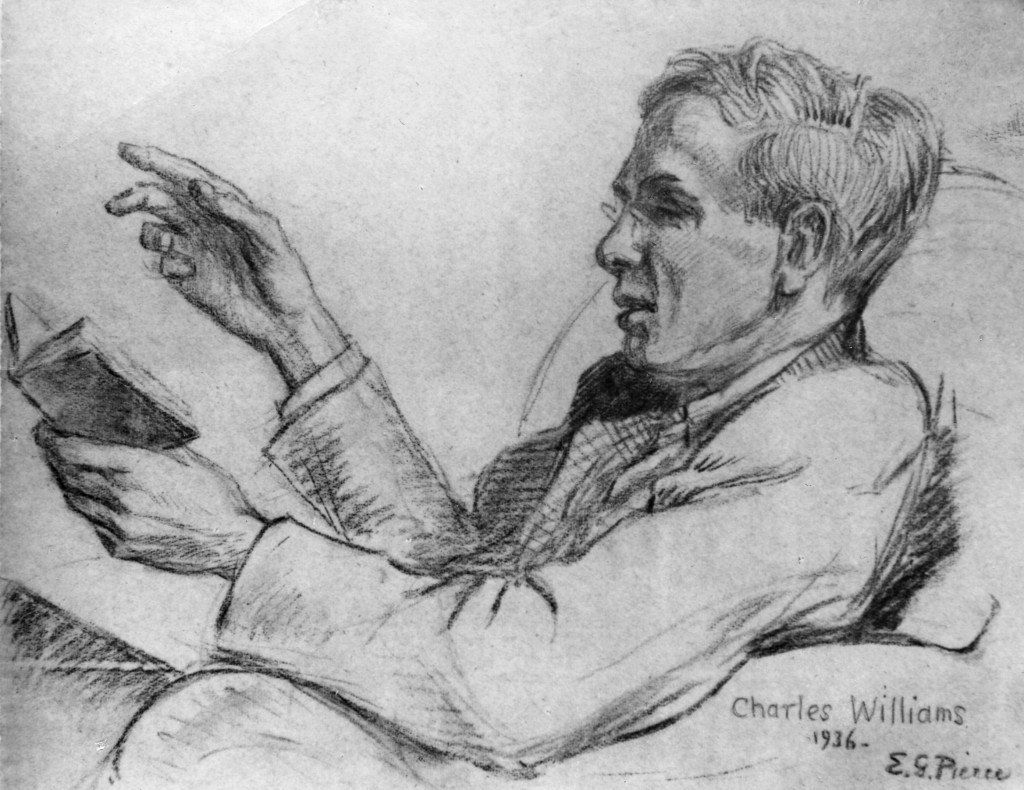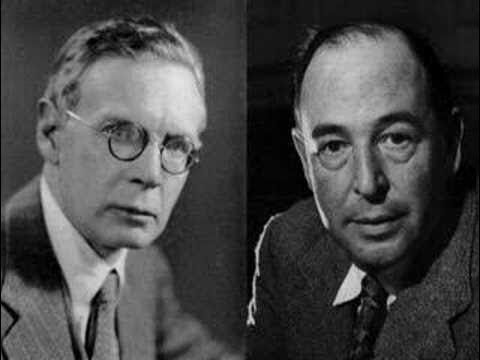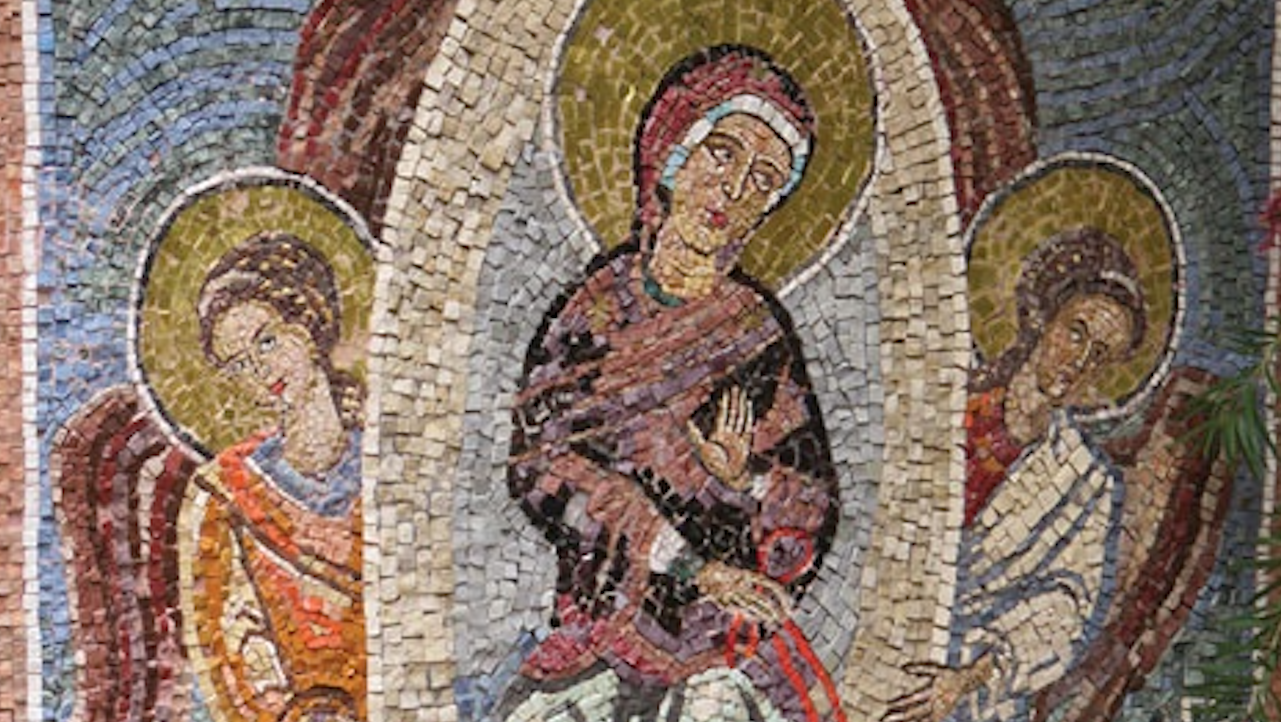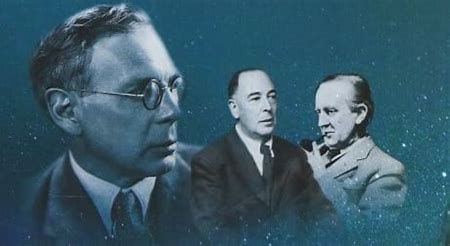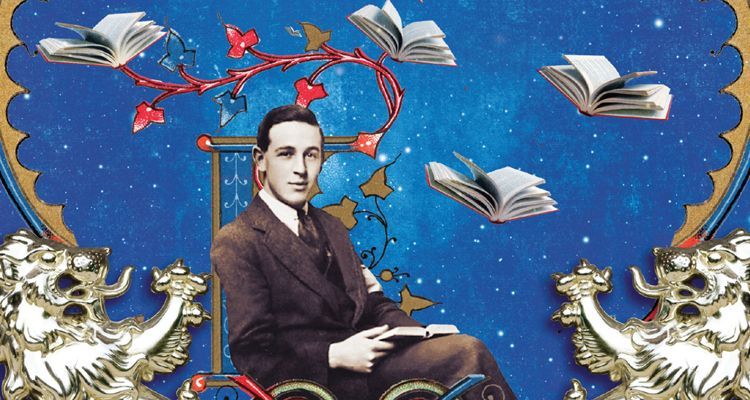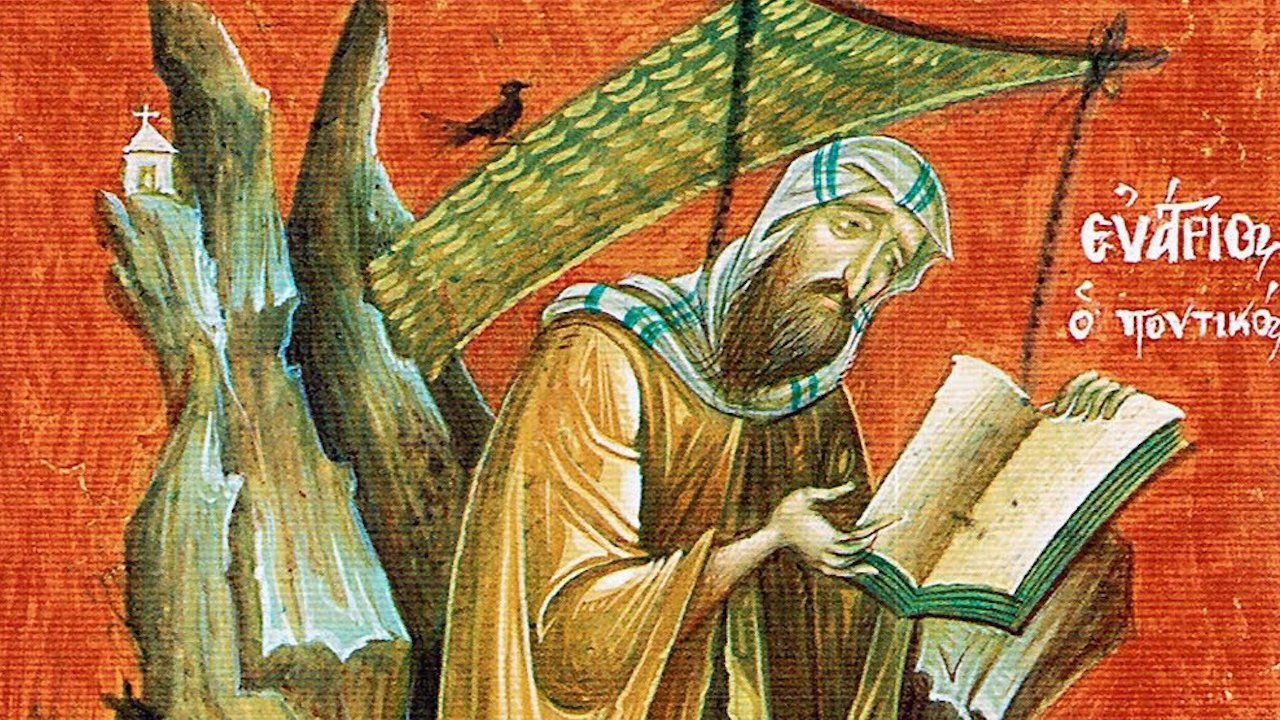David Jones
by Eric Gill
Feast of St Martyrius the Deacon, Recluse of the Kiev Caves
Anno Domini 2020, October 25
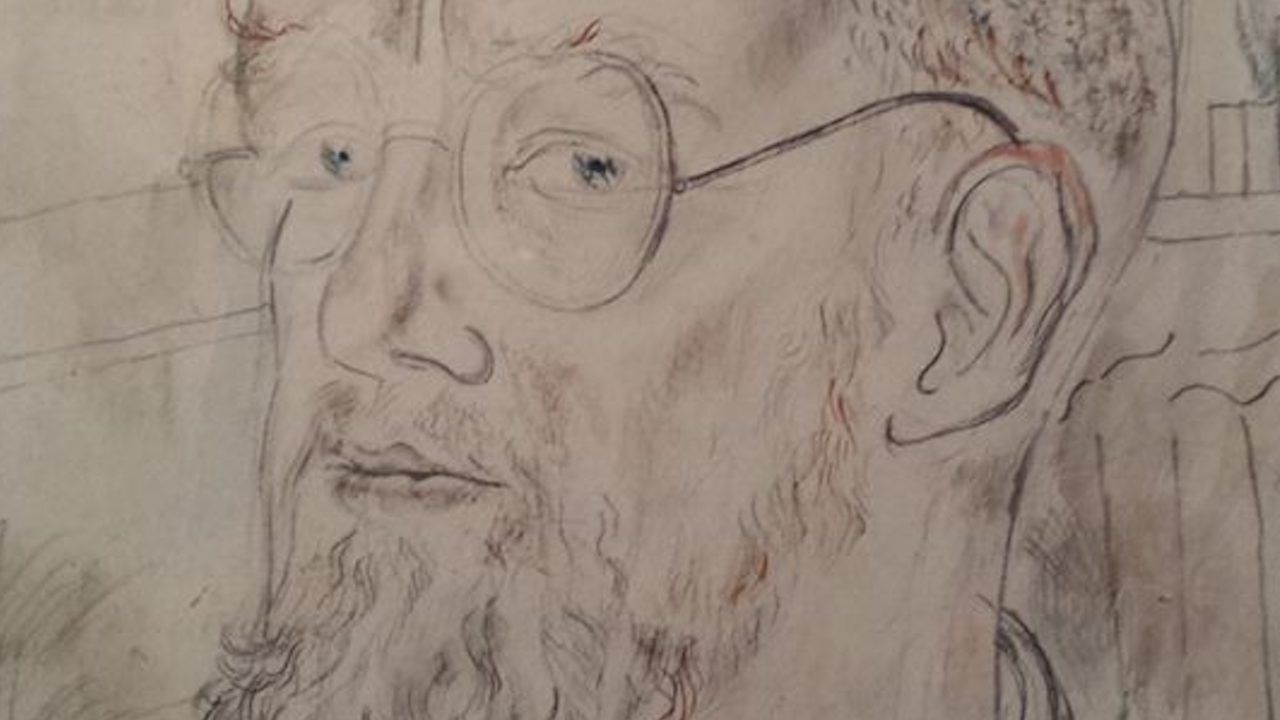
Eric Gill by David Jones (1930)
When one starts writing about things, it seems inevitable that one should see them in terms of categories, especially when, as at present, schools and rumors of schools are on every hand; and though the general notion precedes the particular notion, and “Man starts with the highest type of knowledge—the intuition of pure Being,” nevertheless, now that the Royal Academy is not only Royal but commonplace, we must make our first category that of purely naturalistic painting.
Let us say then that first of all there is the painting which sets out to be an exact representation or record of something seen by the painter, as he sees it. Regarded as serving the useful function of making records of things deemed worth recording, this kind of painting is by no means despicable; and when the artist’s aim is sufficiently simple-minded, it may even result in paintings of more than historic value. The drawings of Ruskin of plants and animals, because Ruskin was so intensely interested in the plant or animal he was drawing and was not concerned with anything else, and many Dutch Interiors, are excellent works of art in their kind, and that kind is in itself a good one. It is only when the aim of the artist is impure and he allows himself to be sidetracked by irrelevant considerations that we get such degradations as Luke Fildes and the ordinary run of Royal Academy painters, whose work is not a failure because of any lack of technical ability, but simply because it lacks purity of motive. It is devoid of any single-minded enthusiasm
And it is not only things which provide the painter with that saving grace of single-mindedness: for it now appears clearly that the real beauty of the works of the best French impressionists is of the same kind as that achieved by the Pre-Raphaelites; but where Holman Hunt painted faithful representations of objects of domestic and social affection inspired by Victorian sentiment and romanticism the Frenchmen made faithful representations of the light before their eyes, inspired by Rousseauish and equally romantic worship of Nature.
At the other end of the categoric pole is purely abstract painting, and here there is no question of representation or imitation. But as the creature called man is not of a kind which can make pure inventions—he cannot create out of nothing—even his most abstract efforts have some kind of derivation from things seen and known.
Everybody knows that mere patterns are delightful and there is no need to inquire about their origins. It is only for catalogue purposes that we label this pattern the “Egg and Dart,” or that the “Sponge Bag.” But there comes a point at which patterns cease to be “mere”; they even arrive at a place where they seem to merit such high-sounding adjectives as profound and grand and sublime.
It is this discovery which has given life to much of the revolt against the sentimental naturalistic painting of the last three hundred years, and critics have gone so far as to affirm that this quality of form is the one which gives value even to those paintings in which the subject matter is the most obvious.
“Significant Form”—that is the cry! god and Love, the story of Creation and Redemption, domestic bliss, or human adventure, all these things, from this point of view, are seen to be merely vehicles for what is pleasing formally. And not only does the modern painter of this school of thought set out to make paintings which shall make no appeal to sentimental or anecdotal interest, but ancient paintings have been revalued. Rubens is no longer a painter of goddesses, or Raphael even of Madonnas. Such things are now considered irrelevant to the professional artist; it is the formal aspect of their work which alone gives them their value, and much good has been done in this revaluation, for many reputations precariously balanced upon mere social approbation have been permanently destroyed. Nevertheless, such an exclusive insistence upon form, however useful it has been as an eye-opener, is as essentially heretical as a too-exclusive insistence upon representative veracity, or upon utility, i.e., the value of a painting as doing something of service to its owner; for heresy in artistic thinking, as in other matters, is little more than a running amok after one statement of the truth to the exclusion of others. Many a painting whose producer thought of nothing but verisimilitude and the service of his fellow-men, does indeed achieve what Mr. Clive Bell calls “Significant Form.” Many a painting whose producer thought of nothing but formal values does indeed achieve even verisimilitude and serviceableness. Nevertheless, the truth is in neither one nor the other; it emerges clearly that the Golden Rule is not a mean between extremes but a combination of the two. Reality, the Kingdom of Heaven, is neither merely useful nor merely amusing; man is neither merely material nor merely spiritual, and art, though, by definition, concerned solely with the good of the work to be made, is concerned with work to be made for men. The too purely prudential attitude of the Victorians, the too purely artistic attitude of the moderns, both alike miss the reality.
The modern artist is therefore as much in difficulties as his predecessor. In saying that the subject of a picture does not matter and that a painter should look as well upside down as the right way up (that, in fact, there is no right way up), he is saying something just as erroneous as the old-fashioned art master who talked of nothing but anatomical exactitude and anecdotal or romantic interest. But to get the matter right again unfortunately requires either quite exceptional clear-headedness as a gift of nature, or guidance from an authority which is not subject to heretical leanings, and this is not part of any art training but is a matter of philosophy and religion.
Mr. David Jones is a painter who sees this modern dilemma very clearly, and we should miss all the quality of his work if we did not see that it is a combination of two enthusiasms, that of the man who is enamored of the spiritual world and at the same time as much enamored of the material body in which he must clothe his vision. The difficulty of preserving a balance between representative felicities and those which are purely intellectual and aesthetic is perhaps greater for painters than any other kind of artist. Verisimilitude, though perhaps not easy in any art, is easier in painting than in most, especially when four centuries of concentration upon it by artists and the illustrated press have flooded the world with photographic representations. The imitation of natural appearance, if it ever was a difficulty, is difficulty no longer. Of course, it requires hard work and obedience to the rules to become proficient, but these are difficulties which determination can overcome. The real difficulty now lies in making a rebellion which shall be neither an affair of archaism nor of charlatanism. The painter must have a very clear idea as to what a picture really is, and as to why and what he really likes painting. and not only must the painter thus clear his head, but he who buys and he who criticizes are under the same obligation. The most clear-headed and enthusiastic painter may fail to win any support unless those who see his work are capable of sharing or sympathizing with his aims.
David Jones was born at Brockley in Kent in 1895. He was a student under A. S. Hartrick, at the Camberwell School of Art, from 1910 to 1914. He served throughout the war with the Royal Welch Fusiliers. From 1919 to 1921 he was a student, under Walter Bayes, at the Westminster School of Art. Apart from a few small sculptors in boxwood (things which alone would place him in the first rank of modern artists), his work has been chiefly wood and copper engraving, and water-color drawing. He has done engravings for the St. Dominic’s Press, the Golden Cockerel Press (“Gulliver,” “Jonah,” “The Deluge”) and for Douglas Cleverdon, Bristol (“The Ancient Mariner”). Of the last it may be said that Coleridge’s poem has for the first time found adequate pictorial accompaniment. As a water-colorist he has worked chiefly in Wales, the south of France, at Hove and at Brockley. Though in one place he may find more inspiration than another, it is not places that most concern him. What concerns him is the universal thing showing through that he endeavors to capture. The eye sees particular things, but the man’s delight in the physical vision is checked by the mind’s apprehension of the universal informing it. Nevertheless, in spite of this idealistic attitude he never loses sight of the fact that it is a painting he is making—or a drawing, or an engraving; it is not merely an essay in Platonic research. Paper and paint, the brush, the graver all make their own proper demands and yield their own proper fruits. The difficulty, the job, is one of translation—how to translate this universal thing into terms of paint and paper.
What starts a man painting, why this special concern for spiritual things? It must on no account be supposed that David Jones is that kind of “high-brow” whose essays in paint are a condescension. Paint, color, flowers, flesh, these are the things which delight him. But his is that kind of fastidiousness which is not content with simple reproductions of delightful things. Even “the particularly juicy bit” which starts him off he holds with a grasp which at any moment he is prepared to relinquish. And yet, and yet—even though the grasp be relinquished, the thing and its delightfulness still pervade and must pervade the painting.
To David Jones, a painting is neither simply a representation nor simply a painted pattern. He resists equally firmly the seduction in either direction. If he delights especially in the beauty of flowers and animals and young girls, his paintings are not therefore to be regarded simply as records of those things; there is nothing of the Pre-Raphaelite in him. If he delights in the purely aesthetic quality of paint on paper, the beauty of arabesque, of light and color, his paintings are not therefore simply essays in abstraction. He is not an Impressionist, nor, except by accident of date, a Post-Impressionist. It is not for me to say simply that his work is good; my object is rather to make a clear statement of his point of view, so that those who see his work will at least be in the position to judge fairly, and will not be in the position of those unfortunate persons who, having paid to see a football match, find a cricket match inflicted upon them.
*From Eric Gill,
It All Goes Together: Selected Essays (New York: The Devin-Adair Company, 1944), pp. 28-33.
Contribute to Cultural Renewal by Sharing on Your Preferred Platform
In an isolating secularized culture where the Church's voice is muffled through her many divisions, Christians need all the help they can get to strengthen their faith in God and love toward their neighbor. Eighth Day Institute offers hope to all Christians through our adherence to the Nicene faith, our ecumenical dialogues of love and truth, and our many events and publications to strengthen faith, grow in wisdom, and foster Christian friendships of love. Will you join us in our efforts to renew soul & city? Donate today and join the community of Eighth Day Members who are working together to renew culture through faith & learning.

